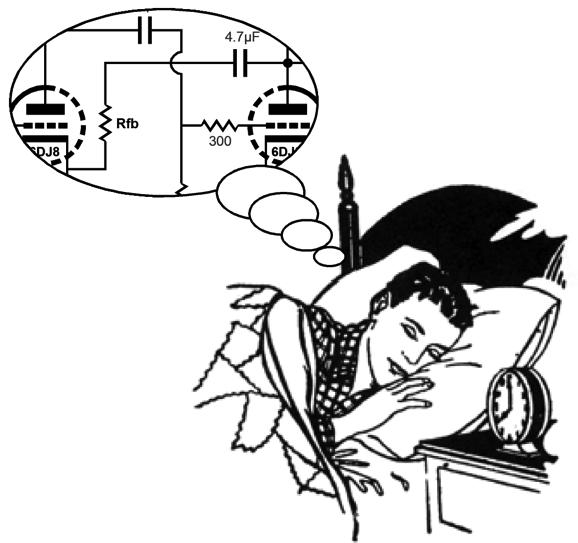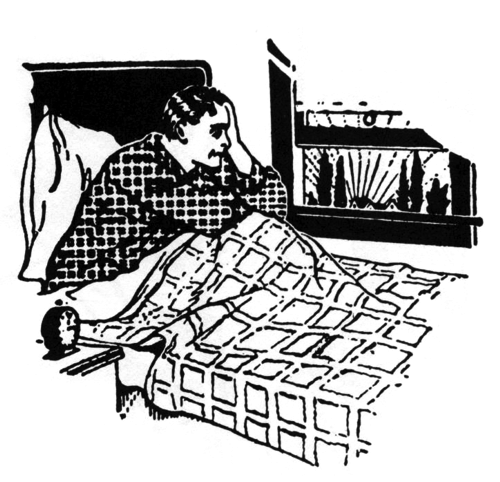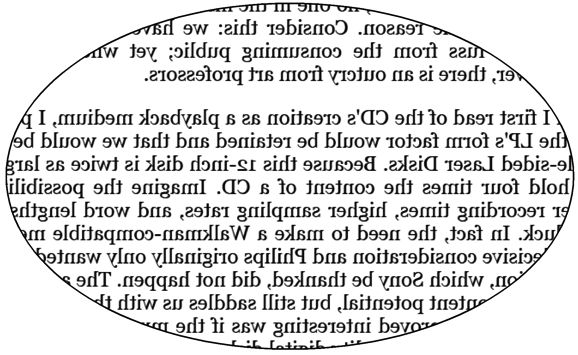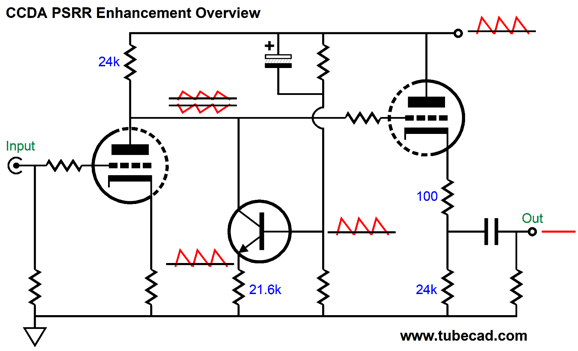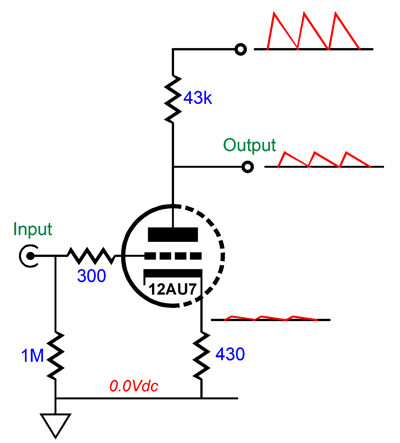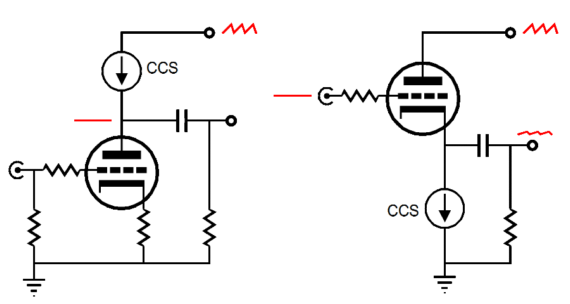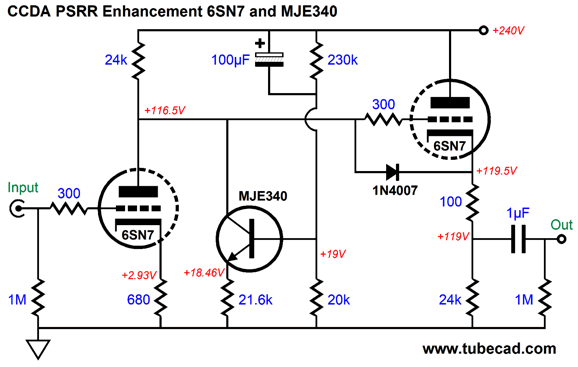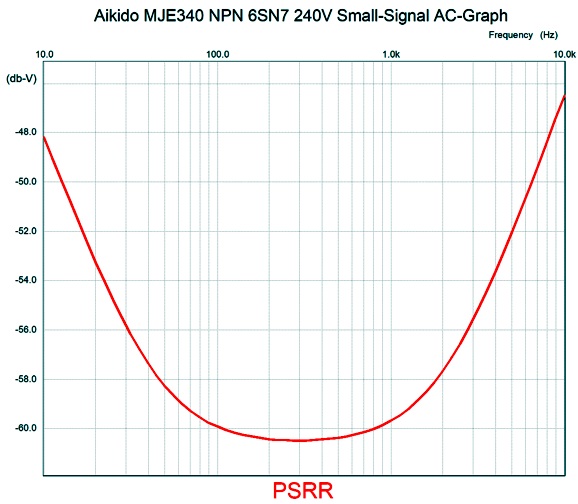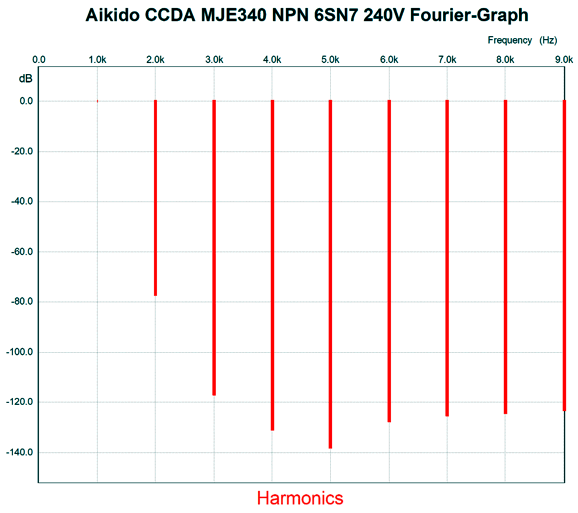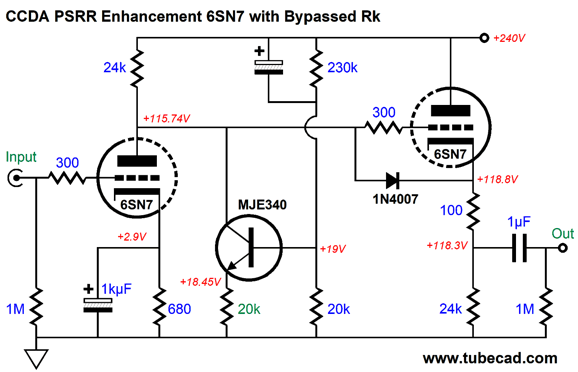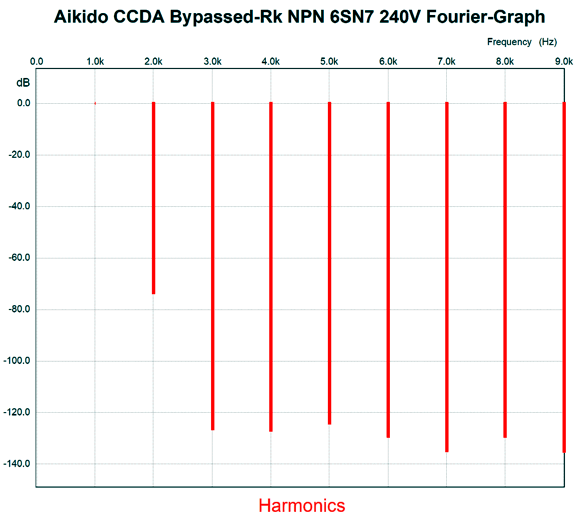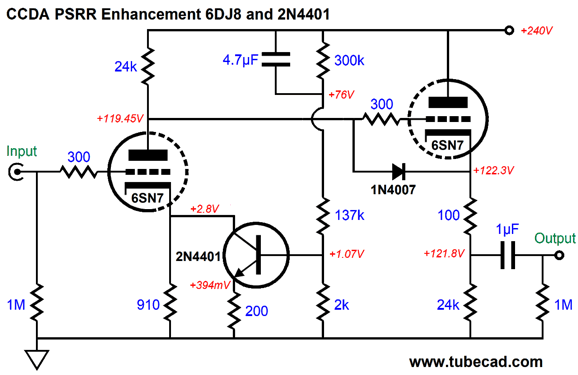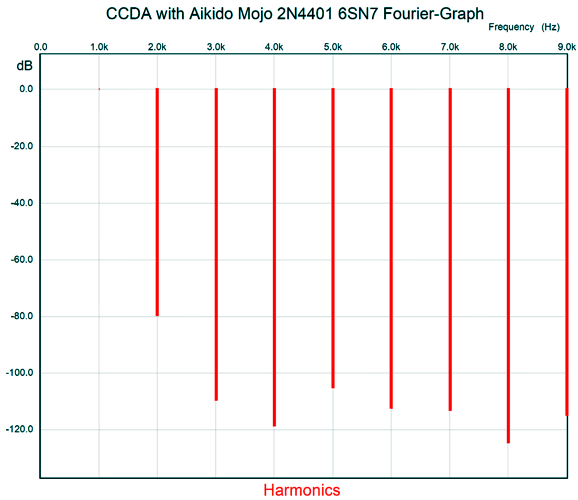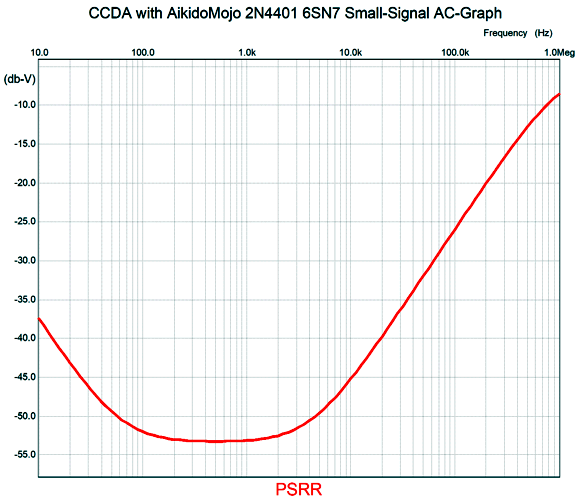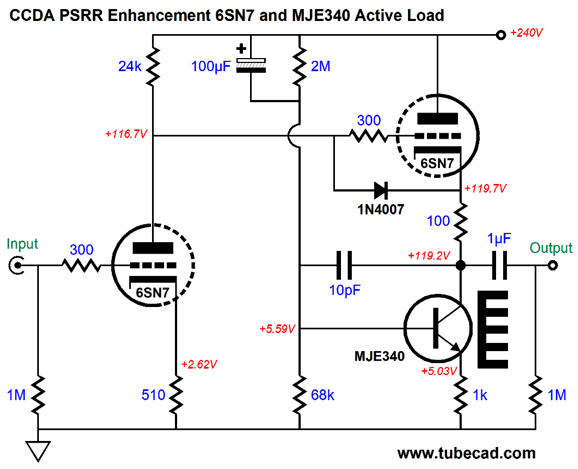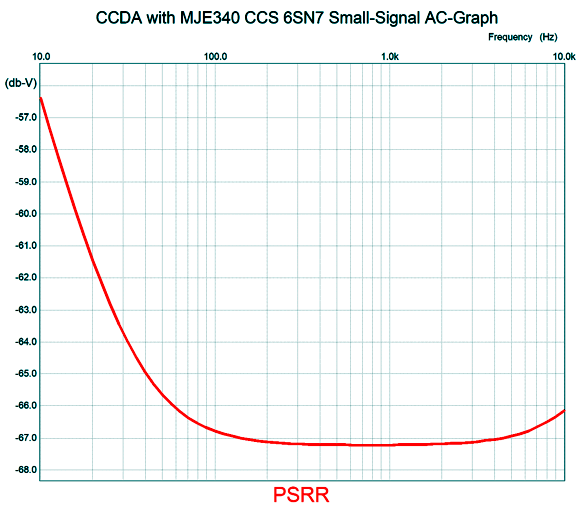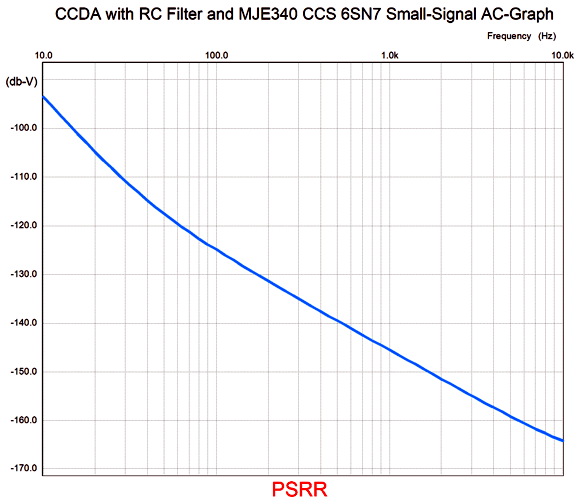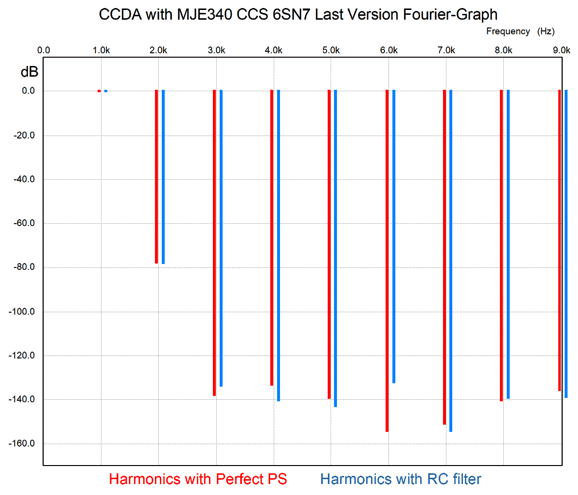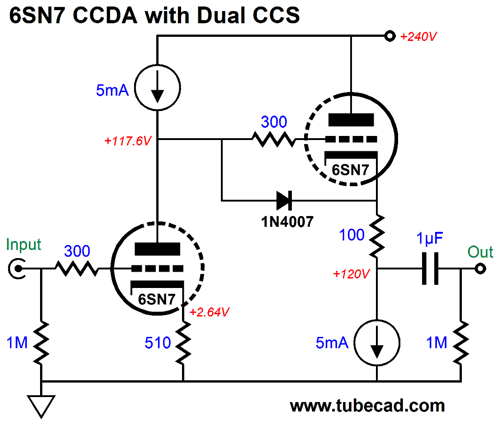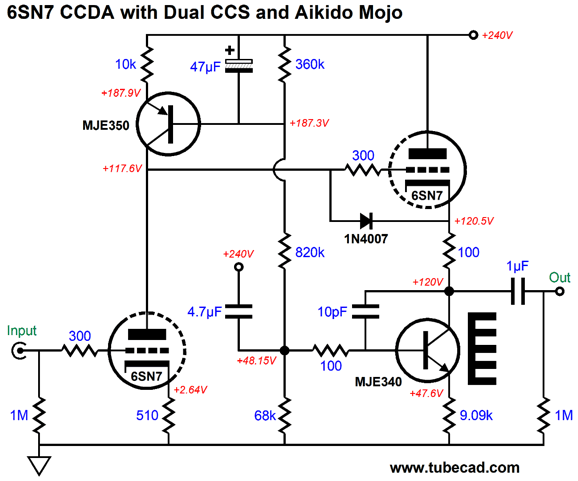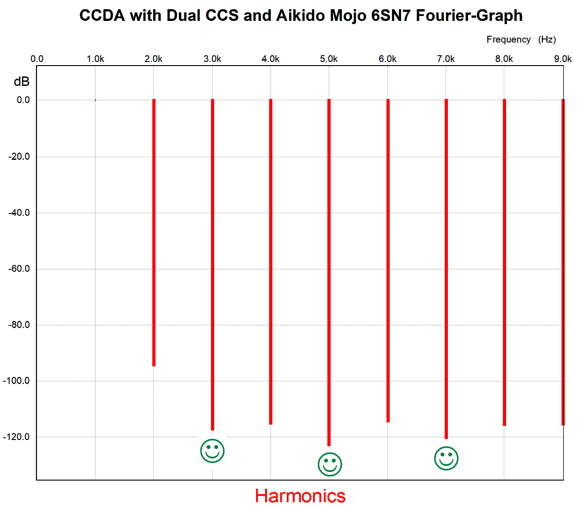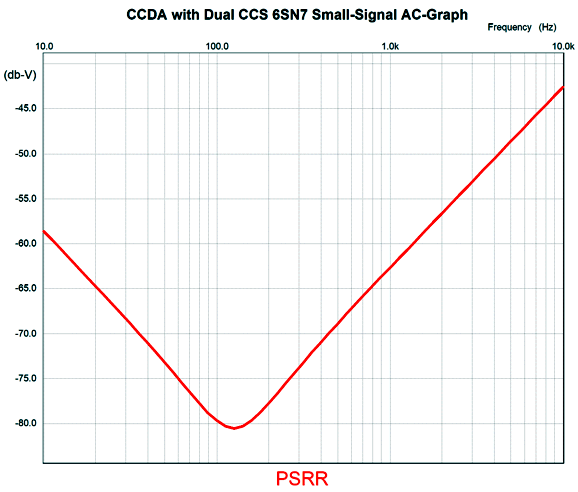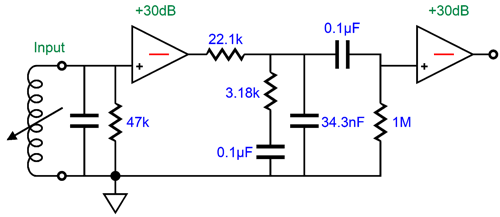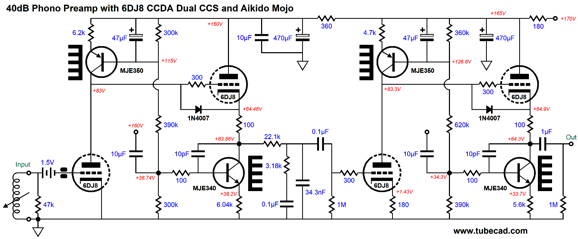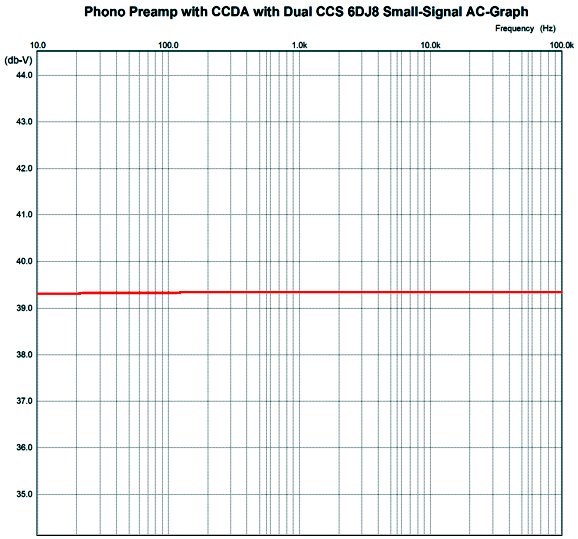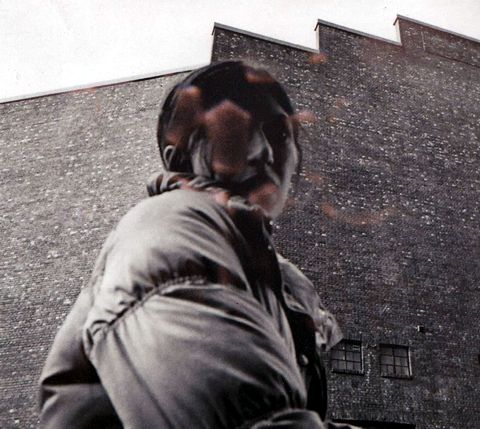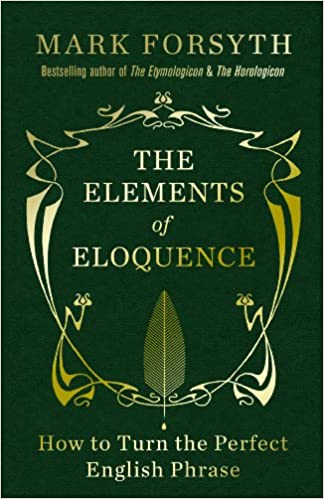| John Broskie's Guide to Tube Circuit Analysis & Design |
08 April 2022 Post Number 556
Dream-Induced Circuits
So, was the circuit worth saving? No. It was overly complicated and the auto-bias feature really isn't needed. What I found most interesting was the realization that in my dream I listened to a familiar track of music play as if a CD were being played. We have all heard of photographic memories. (Hell, I have been repeatedly accused of owning one.) But have you ever heard of a phonographic memory? If it can exist, could we hear in our mind a complete Beatles song or the first movement of a Beethoven symphony? I once knew a composer who told me that as he looked at sheet music, he heard the music as he eyed the lines. Forty years ago, I knew a retired typesetter who showed me that he could read text upside-down, sideways, backwards, and mirrored—and any combination.
The human mind is an amazing thing. Returning to my dream CCDA circuit, I have come up with at least three ways to inject some Aikido mojo into the CCDA circuit. The CCDA circuit on its own produces a poor PSRR, usually only -6dB, so adding some Aikido mojo is welcome. A reasonable goal would be to achieve a PSRR of at least -40dB, as RC or LC filters or voltage regulation would further reduce the PSRR beyond what Aikido mojo could deliver on its own. The following CCDA circuit uses a single high-voltage transistor to cancel most of the power-supply noise leaving the output coupling capacitor.
The 24k plate resistor sees the current flow from both the input triode and the NPN transistor. The NPN transistor's base sees all the AC power-supply noise at its base, which it then superimposes on its emitter resistor. The varying current flow through the resistor that results from the power-supply noise flows up through the plate resistor, which forces the plate voltage to remain fixed in spite of the power-supply noise, as noise current leaving the transistor is in phase with the power-supply noise. A quick guess would be that the emitter resistor's value should match the plate resistor's value. This guess would work, if the output coupling capacitor attached to the plate, but the output capacitor attaches to the cathode follower's 24k resistor. In other words, we need a slightly smaller valued emitter resistor to create a slightly larger in-phase current to overcome the cathode follower's own limited PSRR, which is close to 1/mu with a constant-current source load. Perhaps that was too brief an explanation. Let's pull back at look at the circuit from a higher overview. We know that no high-voltage power supply is entirely noise-free. We know that a grounded-cathode amplifier will leak AC noise to roughly the same degree as it divides the B+ voltage at the plate. For example, if the B+ voltage is 240Vdc and the plate voltage is 120Vdc, we can expect about 50% of the power-supply noise to leak out at the plate. What can complicate the situation are the external load resistance and whether the cathode resistor is bypassed or not.
If the cathode resistor is shunted by a large-valued capacitor, then the plate resistor and the triode's own plate resistance (RP) will define a two-resistor voltage divider. Since the triode's rp is usually far lower in resistance than the plate resistor, we can expect far less of the power-supply noise to leak from the plate's output. For example, a 6DJ8 has an rp of about 3k, so with a 24k plate resistor, we would expect 3k/(24k + 3k) or 0.11 or 11% of the power-supply noise to appear at the plate. Continuing with our high-level overview, if somehow the power-supply noise at the plate were zero, the plate resistor would see 100% of the power-supply noise, which would induce a variation in current flow equal to Vnoise/Ra, where Vnoise is the power-supply noise and Ra is the plate (anode) resistor value. This ripple-induced variation in current flow must be countered with an in-phase variation in current flow from the NPN transistor to create a noise-null that the plate. To see how that works, imagine the B+ voltage experiencing a +1V bump in voltage. Normally, with a triode-based grounded-cathode amplifier, the voltage bump halves at the plate. In contrast, in this circuit, the plate resistor sees the current flow through increase not by Vnoise/(Ra + (mu + 1)Rk), but by 2 ·Vnoise/(Ra + (mu + 1)Rk). This doubling of the ripple-induced variation in current flow means that as the B+ voltage bumps up by one volt, the plate resistor sees its voltage drop increase by one volt. Had the B+ voltage dipped by one volt, the plate resistor's voltage drop would decrease by one volt. In both cases, the plate voltage remains constant, as 1 -1 = 0, just as -1 + 1 = 0. With the cathode follower, its PSRR is much improved over the grounded-cathode amplifier, but it is not perfect, as some of the power-supply noise will leak from its output at its cathode. How much? It depends on the triode's rp and amplification factor (mu) and the cathode resistor and load resistance. If a cathode follower were loaded by constant-current source rather than a cathode resistor, we would expect about 1/mu worth of power-supply noise leakage. This noise leakage is in phase with the grounded-cathode amplifier's noise leakage, which sadly worsens the PSRR of the pairing. But if we slightly over compensate for the grounded-cathode amplifier's leakage, we can also undo the cathode follower's leakage.
Okay, enough overview, let's fill in the missing part values.
The NPN transistor draws a little less than 1mA of current, so its dissipation is a little less than 0.1W. Thus, no heatsink is needed. The added 1N4007 rectifier is there to protect the cathode follower at turn-on. In other words, at turn-on, when the cathode is still cold and the triode is not conducting, the B+ voltage will feed into the cathode follower's grid, while the cathode is at ground potential (i.e. 0V); not good, as such a huge voltage differential can cause cathode stripping, wherein bits of the cathode coating are ripped away by the strong electrostatic field. (Remember, the grid wires are dang close to the cathode, so the volts-per-inch are huge.) The 100µF capacitor value may seem outrageously large, but it is needed to create a PSRR null that extends down to 100Hz.
The PSRR almost reaches -60dB at 100Hz, which is 10 times better than the stock 6SN7-based CCDA in terms of dBs; but in terms of AC voltages, it's 500 times lower! The input signal gain comes in at 20dB, which is plenty for a line-stage amplifier. The output impedance is a tad below 500 ohms. The THD at 1Vpk at 1kHz is 0.014%. Here is the SPICE-generated Fourier graph.
A lovely single-ended cascade of harmonics down to the fifth. Without the Aikido-mojo NPN transistor, the cascade would continue through the ninth harmonic; nonetheless, the distortion is plenty low. Just for kicks, let's examine the variation with a bypassed cathode resistor for the input grounded-cathode amplifier.
Here we see the NPN transistor's emitter resistor drop in value to 20k, which implies slightly more aggressive ripple-induced variation in current flow. The gain has increase from 20dB to 23dB (i.e. from 1:10 to 1:14), while the PSRR remains the same. The THD measured from SPICE simulations was 0.0214% at 1Vpk at 1kHz, almost twice the unbypassed version's, but still negligible. In fact, some might prefer the sound from this variation, due to the stronger 2nd harmonic and reduced 3rd, 7th, and 9th harmonics.
CCDA Version 2
This time, the NPN transistor's varying current must flow through the triode to get to the plate resistor. The 2N4401 is a general-purpose NPN transistor with a maximum collector-to-emitter voltage of only 40V, which is plenty, as in this circuit it will see less than 3Vdc. As the transistor sees only 2mA of current flow and dissipates only 5mW, no heatsink is needed. Since its emitter resistor will correspondingly see a much smaller voltage drop, the resistor's value must be correspondingly larger. In this example, it's only 200 ohms. This means that the amount of the power-supply noise delivered to the 2N4401's base must be correspondingly small, which explains the two-resistor voltage divider made up of the 137k and 2k resistors. The 300k resistor shunted by the 4.7µF capacitor is there to drop 164V of DC voltage and to relay all of the power-supply noise to the top of the 137k resistor. Okay, how well does this variation work? The THD came in at 0.01% and the PSRR at 100Hz was -53dB.
Once again, the output was 1Vpk at 1kHz. Although the THD is lower, I prefer the harmonic structures of the previous two variations. I see a problem in that the NPN transistor's distortion gets amplified by the triode.
The PSRR is roughly the same as the previous version's.
CCDA Version 3
The input stage passes along about half of the power-supply noise to the cathode follower's input, which the active load strives to undo. The MJE340 NPN transistor dissipates enough heat (0.6W) to warrant a heatsink, albeit a small heatsink. The 100µF electrolytic capacitor relays all of the power-supply noise to the transistor's base, which then becomes superimposed upon the emitter resistor, resulting in an in-phase ripple-induced variation in current flow. If the cathode follower's output pulls upward due to the B+ voltage swelling in voltage, the active load pulls the output down with its in-phase increase in current conduction. If the B+ voltage momentarily dips, the active load sees this dip and decreases it current flow, which prevents the cathode follower's output from also dipping. Okay, how well does this last variation work? The THD came in at 0.013% and the PSRR at 100Hz was better than -66dB.
This is a true improvement over the previous variations. Bear in mind, that this is raw PSRR, without RC or LC filters or voltage regulation. By adding just an RC filter, the PSRR improves substantially. Let's increase the raw B+ voltage to 317Vdc and add an RC filter made up of a 7.5k resistor and 150µF capacitor. (The B+ voltage the tube circuit sees is still 240Vdc.)
Note the -125dB PSRR at 100Hz. The distortion remains the same.
Voltage sources in SPICE are perfect, the ideal that high-voltage regulator strive to emulate. An RC filter, in contrast, is not perfect, as it presents a frequency-dependent output impedance. With the exception of the 6th harmonic, the RC-filter version is close enough, even for audiophile ears. In fact, the slightly better 5th, 7th, and 8th harmonic reductions are especially sweet. This SPICE shootout delivered a winner that I didn't expect. Well, this got me thinking about a similar circuit I had come up with decades ago: a CCDA with two constant-current sources, one for the grounded-cathode amplifier and one for the cathode follower. I had originally based the circuit on the 6DJ8, so I had to alter all the part values to use a 6SN7 in its stead.
I had originally based the circuit on the 6DJ8, so I had to alter all the part values to use a 6SN7 in its stead.
Both stages draw about 5mA. The resulting gain approaches the triode's mu, coming in at 1:19.4 or almost 26dB. The THD in SPICE simulations was a fine 0.002%. I expected worse, due to the increased gain (i.e. less degenerative negative feedback). Here is the Fourier graph for 1Vpk at 1kHz).
Note the wonderfully unnatural suppression of the 3rd, 5th, and 7th harmonics. The PSRR is quite amazing.
Wow! Better than -80dB at 100Hz. The only problem might be that the gain is too high for a line-stage amplifier. On the other hand, the extra gain might make for a good frontend for a single-ended power amplifier. For example, a KT88-based single-ended output stage might only need 30Vpk of input signal to achieve full power output, which would require only 1.5Vpk into the dual-constant-current-source CCDA. Indeed, we could tweak the Aikido mojo portion of the circuit to eliminate the power-supply noise from the secondary that couples to the loudspeaker, which means that we might have to worsen the PSRR in the frontend to create the power-supply-noise null at the loudspeaker.
A more likely use for this topology is a phono preamp, as a great PSRR is an essential feature in a phono preamp. The idea is simple enough: we use two dual-constant-current-source (DCSS) CCDA gain stage in series, with a passive RIAA equalization network in between. As the passive equalization network incurs an insertion loss of -20dB, to get to 40dB of final gain requires 60dB gain prior to equalization. A 6DJ8-based DCCS CCDA deliver a gain of 30dB, so two in cascade will yield the needed 60dB.
Each DCSS CCDA inverts the phase, so the two in series returns the phase to non-inverting. The passive equalization network must include the 1M grid resistor in its calculation, as the 1M and 22.1K are effectively in parallel. In addition, we must include the first DCSS CCDA stage's output impedance (about 200 ohms) in the calculations. In other words, the 22.1k resistor might seem too high in value, but it isn't.
Note the relatively low B+ voltage and the two cascading RC filters on the B+ voltage. I wanted to sidestep the hassle of cathode bias for the input triode, which explains the inclusion of the AA battery. (The battery can be bypass by a high-quality capacitor.) Following the battery is a ferrite bead to limit RFI ingress. The Input triode draws 7mA of current, which helps ensure lower noise from the triode. The 3.18k resistor is made up from 1.58k and 1.6k resistors in series. Note that the second gain stage uses an unbypassed cathode resistor on its input triode. Why? With the second gain stage, we are less concerned with the absolute lowest noise possible and more concerned with dynamic headroom. How well does it work? Quite well in SPICE simulations. Here is the frequency plot.
That's about as flat as you can get. The gain is close to 40dB, but the RIAA equalization network and the 1M grid resistor create a two-resistor AC voltage divider that entails a slightly greater than -20dB insertion loss. By the way, it's worth going over again why I stress power-supply noise reduction so much. First, blindfolded listeners can recognize the tube-based audio gear—even when no music is being played—by its poor PSRR. This means that in any audio shootout between solid-state and tube gear, the tube equipment must fight an uphill battle. Second, power-supply noise comes from two sources: the first is the power transformer and rectifiers; the second is audio signal itself. As one triode draws more current, the B+ voltage sags slightly; when that triode draws less current, the B+ voltage swells slightly. In other words, the audio signal modulates the B+ voltage, which causes other stages to see a garbled audio signal superimposed upon the B+ voltage. My Aikido-mojo techniques work just as well at eliminating power-supply noise induced by the audio signal amplification as they do at eliminating rectification noise.
Music Recommendation: Warm Chris
Answer: those songs are no longer being written. They didn't stop with the Great American Songbook, as great lyrics were being written in the 50s, 60s, 70s, 80s, and the early 90s. Then they weren't. Apparently, artful and clever lyric creation makes too great a demand on our brain's frontal lobe, whereas pop music seems to have sidestepped the need for gray matter altogether. Lyrics no longer resemble sentences or even fragments, as a single word or just half a word suffices. If we seek lyrics, we must look elsewhere, such as in rap music. Alas, rap's lyrics secrete from deep within our brain, underneath the cerebral cortex and above the brainstem, in the limbic system and reptilian complex—the primitive, primal home of anger, fear, lust, and greed. Subtract the mindless sex, the pointless swearing, the shameless name dropping, the ever present women degrading, the boundless and extravagant murdering, along with the fast cars and gold-plated toilets—well, there's not much left, is there? It's not hard to imagine the perfect rap song, i.e. angry, but futile, both meaningless and temporary, as it would only hold two words. It would begin with the word, "f*ck," which it would repeat 99 times to the relentless, melody-free, and mechanical beat, and then end with the word, "you." Think of it as an anthem or ode to imprecation. True, rap is not the only musical wasteland; indeed, it is not most bleak. Most pop music is actually worse off. How so? Rap lives and thrives. Yes, it is a weed in the garden, but it is the only healthy plant. By necessity, it must hold lyrics, whereas pop music is not so constrained. Moreover rap has a sense and awareness of past rap giants (Dmx, Eminem, Jay-Z, Kanye West, Snoop Dogg, 2Pac), whereas pop music is frozen in the present, which has not budged. For at least the last two decades, the LP that is pop music has been skipping, but no one has had the sense or courage to slap the turntable. Most importantly, rap fills the ever present need for a musical genre that does not require much musical skill to perform. This is not a bad joke. This need does exist in the human spirit. In years past, the need was fulfilled by drinking songs, the early blues, punk rock… Modern pop music also fills a need: sonic wallpaper. Radio station must play something. Stores, gyms, and elevators require background music. In fact, I would place my bet on some new genre emerging from rap, a new type of music that builds on rap's story-telling and adds the requirement of some musical ability and, possibly, a few years of training, just as rock was born from the blues. I am sure that it won't be called post-rap, just as rap wasn't called post-hip-hop.
Of course, a few modern lyrics do ascend to greatness. For example, Mark Forsyth, in his delightful little book, The Elements of Eloquence, credits Leonard Cohen with beating Shakespeare at the game of hendiadys with the following lines from his song, Hallelujah.
Hendiadys is an ancient and simple rhetorical technique; you take an adjective-noun pairing and split it into two nouns. Making it work (and making sense of the result), in contrast, is difficult. Did Cohen start with "her moonlit beauty overthrew you?" Or, did both her beauty and the dang moonlight itself combine to overthrow you? In other words, was her beauty not enough on its own? Now that Cohen has passed, we will never know the answer. The Bible is filled with hendiadys, as when Jesus tells us of God's glorious powerful kingdom:
Note the use of "is" and not "are." Only one noun is being described:the kingdom. Having mentioned Shakespeare, it is worth noting that his best plays positively drip with hendiadys constructions. Pause and ask yourself how outrageous fortune's slings could provoke suffering? Yet, we read Hamlet's soliloquy and never consider the question.
Did Shakespeare begin with "slung arrows?" We do sling mud and punches and we slingshot rocks. When Macbeth informs us that life is a
Is that tale filled with sounding fury or with furious sounds? The latent ambiguity compels. Had Shakespeare used either of these alternative phrasings, William Faulkner would have to have had to come up with another title for his novel, as no one would have remembered the line from Macbeth. If nothing else, hendiadys is sticky. Okay, returning to Aldous Harding, her lyrics often leave my mind in an unsettled state. Here is an example from her song, The Barrel.
Indeed, I have children and, in that braid, I stay. Beyond her arresting lyrics, there is Harding voice—or rather her voices. She often breaks into a female falsetto, something I wouldn't have thought possible without the aid of helium gas. At other times, her voice drops deep and low. Often, her voice ironically belies her lyrics, for example, a child-sweat voice singing dark lyrics. She is not a one-note folk singer. In fact, I have seen her albums listed under goth-folk, but I would, if forced, categorize them the under art-folk. Really, much like Bjork, she demands her category.
Her latest album, Warm Chris, pleased me greatly, as it marks a return to pure Aldous Harding. Her previous album, Designer, although quite fun, seemed a move towards a more pop sensibility. It was, if nothing else, more danceable. Nor did it offer song titles like What If Birds Aren't Singing They're Screaming and Swell Does the Skull, which we found in her older album, Party. To get a small sampling of her art, watch and listen to her video for her song Fever. (Note that she is flipping through LPs at the beginning of the video.) By the way, Amazon Music streaming service offers Warm Chris in high-res format, 24-bit, 96kHz. //JRB
Did you enjoy my post? Do you want to see me make it to post 1,000? If so, think about supporting me at Patreon.
User Guides for GlassWare Software
For those of you who still have old computers running Windows XP (32-bit) or any other Windows 32-bit OS, I have setup the download availability of my old old standards: Tube CAD, SE Amp CAD, and Audio Gadgets. The downloads are at the GlassWare-Yahoo store and the price is only $9.95 for each program. http://glass-ware.stores.yahoo.net/adsoffromgla.html So many have asked that I had to do it. WARNING: THESE THREE PROGRAMS WILL NOT RUN UNDER VISTA 64-Bit or WINDOWS 7, 8, and 10 if the OS is not 32-bit or if it is a 64-bit OS. I do plan on remaking all of these programs into 64-bit versions, but it will be a huge ordeal, as programming requires vast chunks of noise-free time, something very rare with children running about. Ideally, I would love to come out with versions that run on iPads and Android-OS tablets.
|
I know that some readers wish to avoid Patreon, so here is a PayPal button instead. Thanks.
John Broskie
John Gives
Special Thanks to the Special 81 To all my patrons, all 81 of them, thank you all again. I want to especially thank
All of your support makes a big difference. I would love to arrive at the point where creating my posts was my top priority of the day, not something that I have to steal time from other obligations to do. The more support I get, the higher up these posts move up in deserving attention. If you have been reading my posts, you know that my lifetime goal is reaching post number one thousand. I have 444 more to go. My second goal was to gather 1,000 patrons. Well, that no longer seems possible to me, so I will shoot for a mighty 100 instead. Thus, I have just 19 patrons to go. Help me get there. Thanks.
Support the Tube CAD Journal & get an extremely powerful push-pull tube-amplifier simulator for TCJ Push-Pull Calculator
TCJ PPC Version 2 Improvements Rebuilt simulation engine *User definable
Download or CD ROM For more information, please visit our Web site : To purchase, please visit our Yahoo Store: |
|||
| www.tubecad.com Copyright © 1999-2021 GlassWare All Rights Reserved |
